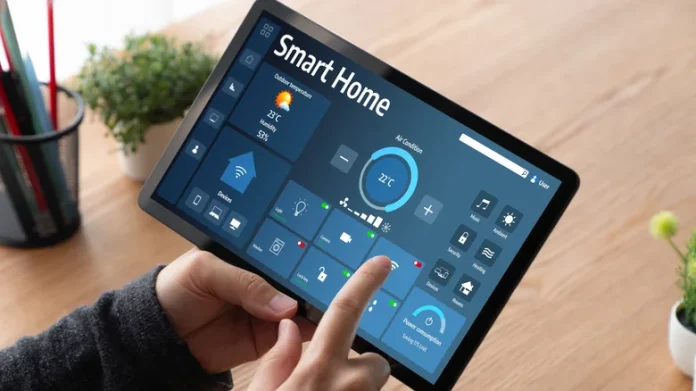The name Raspberry Pi might sound like dessert, but this credit card–sized computer is transforming the DIY tech world. First launched in 2012 by the Raspberry Pi Foundation, it was created to make computing affordable and accessible to everyone. Over the years, it has evolved into one of the most versatile tools in modern technology — powering everything from classroom learning to advanced smart home automation.
Starting at around $50, the Raspberry Pi consumes less than 27 watts of power, making it impressively cost-efficient compared to traditional PCs. Its compact frame hides surprising computing power, complete with USB and HDMI ports, built-in Wi-Fi, and a user-friendly desktop operating system. The latest Raspberry Pi 5 boosts performance even further, with faster speeds and improved graphics.
Its true strength lies in versatility. Makers and homeowners worldwide use it for everything from smart mirrors to automated blinds — proving you don’t need deep pockets to create powerful automation systems.
Whole-Home Hub with Home Assistant
Turn your Raspberry Pi into the command center of your smart home using Home Assistant, an open-source platform for controlling lights, thermostats, cameras, and other smart devices — all from a single dashboard.
Running locally means automation continues even without internet access, and your data stays private within your home network. You can create advanced automations: dim lights at sunset, adjust temperature when you leave, or connect routines to Alexa or Google Assistant.
All you need is a Raspberry Pi 4 or 5 with at least 2GB RAM and a 32GB microSD card. Setup is beginner-friendly, backed by extensive documentation and an active community.
Automated Blinds Controller
Automating blinds isn’t just about luxury — it’s practical and energy-efficient. Pair your Pi with a servo motor, temperature sensor (TMP102), and sunlight sensor (SI1151) to open or close blinds based on light or temperature.
With Python’s gpiozero library, controlling hardware becomes simple. Integrating voice control or AI takes it even further, saving energy and adding convenience — imagine blinds opening at sunrise and closing during the midday heat.
Smart Mirror with MagicMirror
Imagine looking into a mirror that also displays weather, news, calendar events, and more. MagicMirror² lets you do just that using a Raspberry Pi, a monitor, and a two-way mirror.
This open-source software pulls information from online modules, and layouts are fully customizable. Community-made widgets can expand functionality — even integrating smart home controls.
Personal Cloud with Nextcloud
Replace costly subscription cloud services with your own secure server. Installing Nextcloud on a Raspberry Pi creates a private cloud for documents, photos, and videos.
It offers sharing, syncing, calendar integration, and even an AI assistant for productivity. Add an external hard drive for expanded storage and access it securely from anywhere.
Smart Garage Door Opener
Using a relay module and a web app like Blynk, you can open or close your garage door remotely from your phone. Add proximity sensors for geofencing control, cameras for monitoring, or Alexa integration for hands-free convenience — all at a fraction of commercial kit prices.
DIY Smart Thermostat
Link temperature and humidity sensors like DHT22 to your Pi for a thermostat that adjusts automatically based on real-time conditions. Integrating AI allows it to learn your daily routine, saving energy while keeping you comfortable.
Studies show programmable thermostats can reduce energy bills by up to 10% annually — and the Raspberry Pi makes it fully customizable to your lifestyle.
Air-Quality Monitor
With sensors for CO₂ (MH-Z19B), particulate matter (PMS5003), and temperature/humidity (DHT20), the Raspberry Pi can track indoor air quality and trigger purifiers automatically. Sensor data can be logged and visualized to identify problem patterns, helping maintain a healthy environment.
Automated Plant Watering System
Use soil moisture sensors to water plants only when needed, preventing overwatering and conserving water. Raspberry Pi can control multiple zones, integrate weather data, and even alert you via a dashboard when conditions change.
Whole-House Media Center with Kodi
Install Kodi on your Pi to create an affordable, high-performance entertainment hub for movies, TV, music, and retro games. The Raspberry Pi 5’s GPU handles HD playback smoothly, and Kodi supports extensive add-ons and remote controls.
DIY Door & Window Sensors
Create a simple security system using magnetic reed switches connected to your Pi. Notifications can be sent directly to your phone, or paired with lights and alarms for automation. Integration with Home Assistant ensures all your sensors are centrally monitored.
Your DIY Smart Home Awaits
The beauty of Raspberry Pi is that a single device can run multiple projects simultaneously — from environmental monitoring to security and media streaming. With platforms like Home Assistant, all your devices work together: blinds adjust to room temperature, lights dim for movie nights, and air quality stays in check automatically.
Raspberry Pi offers endless possibilities, letting you build, expand, and personalize your home without vendor lock-ins or costly systems. Whether you start small or go all-in, each project brings you closer to a truly intelligent living space.




